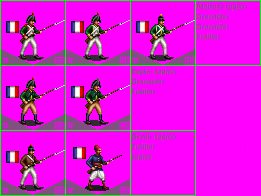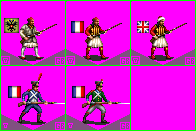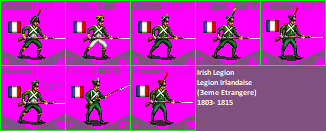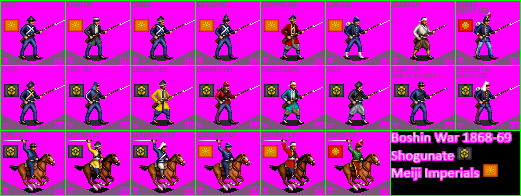Tanelorn
Deity
Maltese legion in French Napoleonic service 1798-1799.
Coptic legion, Egyptian Christians in French Napoleonic service 1799-1801?
Greek Legion in French Napoleonic service 1798-1801 in Egypt up to the siege of Alexandria. Later reformed into the Chasseurs d' Orient 1802-1814, again under Nick Papazoglou. From 1802 to 1805 they were stationed in Marseilles and Toulon. A contigent were prsesent in Trafalgar. In 1806 they fought in Dalmatia (Ragusa/ Dubrovnik) against the Russian Greek legion ( officialy the Light Jäger Foot Legion- the Russians were in command of the Ionian islands at the time) and Kotor among others. In 1809 the Ionian islands went under French control and they were stationed in Corfu. In 1813 the 100-ish remaining soldiers retreated to Ancona, now led by one Gabriel Sidarios, amalgamated with the remaining Coptic legion and adopted the second uniform. They fought the Nepolitans, and through Turin they ended up in Lyon 1814 where they disbanded.
Those that didnt follow him to Marseilles were later recruited in Alexandria by the American consul William Eaton for the 1805 US campaign against the pasha of Tripoli (1st Barbary war). Shown here in typical Aegean Islander/ Asia minor coast Greek costume (top set, last figure).
Attachments
Last edited:















